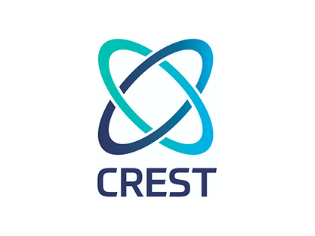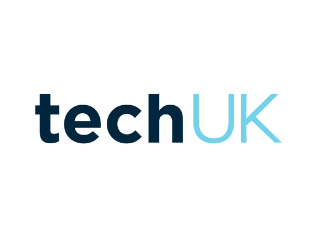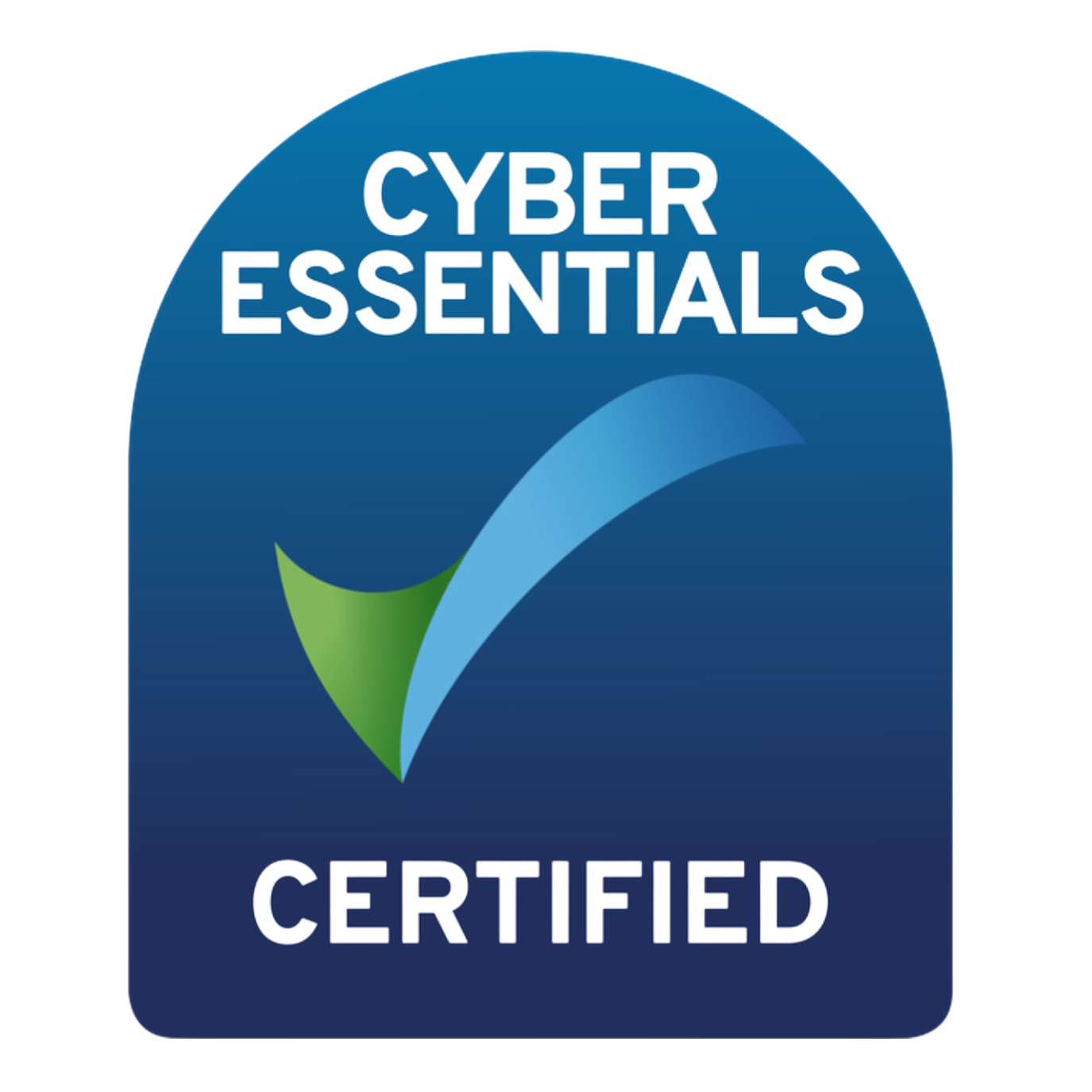Experiencing a Breach? [email protected] | Safetech Blog
Leveraging SOC-As-A-Service for Small to Medium-Sized Organisations
We all know that cybersecurity is a paramount concern for organisations of all sizes, not just the big ones you hear about all the time in the news.
The last 5 years have taught us that small to medium-sized businesses (SMBs) are particularly vulnerable due to often limited resources and expertise in handling sophisticated global cyber threats.
This is where SOC-as-a-Service (Security Operations Centre as a Service) steps in as a game-changer, offering robust security solutions tailored to the needs of SMBs.
At Safetech Innovations Global Services, we specialise in providing top-tier SOC-as-a-Service, ensuring that your business is protected around the clock, 24x7x365.
What is SOC-As-A-Service?
SOC-as-a-Service is a comprehensive security solution that involves outsourcing your security operations to a third-party provider. This service encompasses continuous monitoring, detection, and response to cyber threats by leveraging advanced technologies and skilled security professionals. By opting for SOC-as-a-Service, SMBs can benefit from enterprise-level security without the need to invest heavily in building and maintaining an in-house SOC.
The Importance of SOC-As-A-Service for SMBs
1. Cost-Effectiveness
Building and maintaining an in-house SOC can be prohibitively expensive, especially for SMBs. The costs associated with hiring skilled personnel, purchasing advanced security tools, and maintaining infrastructure can quickly add up. SOC-as-a-Service offers a cost-effective alternative, providing access to state-of-the-art security technologies and expert personnel at a fraction of the cost.
2. Access to Expertise
Cybersecurity is a complex and rapidly evolving field. Keeping up with the latest threats and mitigation strategies requires continuous learning and expertise. SOC-as-a-Service providers, like Safetech Innovations, employ seasoned security professionals who stay abreast of the latest developments in the cybersecurity landscape. This ensures that your organization benefits from the highest level of expertise and proactive threat management.
3. Continuous Monitoring and Rapid Response
Cyber threats can strike at any time, making continuous monitoring a critical component of an effective security strategy. SOC-as-a-Service ensures 24/7 monitoring of your IT environment, enabling the rapid detection and response to potential threats. This minimizes the window of opportunity for attackers and reduces the potential impact of security incidents.
4. Advanced Threat Detection
Modern cyber threats are increasingly sophisticated and can easily bypass traditional security measures. SOC-as-a-Service leverages advanced threat detection technologies, such as machine learning, artificial intelligence, and behavioural analytics, to identify and mitigate threats that might go unnoticed by conventional security tools. This proactive approach ensures that your organization is well-protected against emerging threats.
5. Regulatory Compliance
Many industries are subject to stringent regulatory requirements regarding data protection and cybersecurity. Non-compliance can result in hefty fines and reputational damage. SOC-as-a-Service providers are well-versed in industry regulations and can help ensure that your organization remains compliant with relevant standards, such as GDPR, HIPAA, and PCI DSS.
Safetech Innovations' SOC-As-A-Service: A Comprehensive Solution
At Safetech Innovations, we pride ourselves on delivering a holistic SOC-as-a-Service solution tailored to the unique needs of SMBs. Our approach encompasses the following key components:
1. Proactive Threat Hunting
Our team of security experts conducts proactive threat hunting to identify and mitigate potential threats before they can cause harm. By leveraging advanced threat intelligence and analytics, we can detect anomalies and indicators of compromise that traditional security measures might miss.
2. Real-Time Threat Intelligence
We integrate real-time threat intelligence into our SOC-as-a-Service offering, ensuring that we stay ahead of the curve in identifying and responding to emerging threats. Our threat intelligence feeds are continuously updated with the latest information on threat actors, attack vectors, and vulnerabilities, allowing us to provide timely and effective protection.
3. Incident Response and Management
In the event of a security incident, our incident response team is ready to spring into action. We follow a structured incident response plan that includes containment, eradication, and recovery, minimizing the impact of the incident on your business operations. Our team also conducts post-incident analysis to identify lessons learned and improve our security posture.
4. Compliance Support
Navigating the complex landscape of regulatory compliance can be challenging for SMBs. Our SOC-as-a-Service includes compliance support, helping you adhere to relevant regulations and standards. We provide comprehensive reporting and documentation to demonstrate compliance during audits and assessments.
5. Customised Security Solutions
We understand that every organization is unique, with its own set of security challenges and requirements. Our SOC-as-a-Service is fully customizable, allowing us to tailor our services to meet your specific needs. Whether you require additional monitoring for critical assets, specialized threat intelligence, or bespoke reporting, we can accommodate your requirements.
Case Studies: SOC-As-A-Service in Action.
Below are some examples of how having a SOC in place can protect you from global cyber threats in three different industries, including but not limited to retail, healthcare, and financial services.
Case Study 1: Retail Industry
A mid-sized retail company would typically face challenges with frequent phishing attacks and data breaches, which can threaten its customer data and brand reputation. By implementing a SOC-as-a-Service provision, the retail company would benefit from 24/7 monitoring and real-time threat intelligence. Our proactive threat hunting could identify and mitigate multiple phishing campaigns, significantly reducing the number of successful attacks. Additionally, our compliance support would ensure that the company remained compliant with industry regulations, safeguarding its customer data and maintaining its reputation.
Case Study 2: Healthcare Sector
A healthcare provider was struggling with ransomware attacks that disrupted their operations and jeopardised patient data. They lacked the resources and expertise to effectively respond to these incidents. A SOC-as-a-Service could provide them with the necessary expertise and tools to monitor and respond to threats in real time. With a SOC-As-A-Service, their incident response team could quickly contain and eradicate ransomware threats, while continuous monitoring and threat intelligence feeds would, as a result, prevent future attacks. The healthcare provider could also benefit from compliance support, ensuring adherence to HIPAA regulations and protecting patient data.
Case Study 3: Financial Services
A financial services firm faces many challenges with sophisticated cyber threats targeting their sensitive financial data. They would typically require a robust security solution that could provide continuous monitoring and rapid response. A SOC-as-a-Service provision would deliver advanced threat detection and incident response capabilities, safeguarding their critical assets and ensuring business continuity. If they required customised security solutions, it would most certainly address their specific needs, providing enhanced protection for their financial data and maintaining their reputation in the industry.
Why Choose Safetech Innovations for SOC-As-A-Service?
At Safetech Innovations, we are committed to providing exceptional SOC-as-a-Service to SMBs. Here are some reasons why you should choose us as your security partner:
1. Proven Expertise
With years of experience in the cybersecurity industry, our team of experts has a deep understanding of the evolving threat landscape. We leverage this expertise to deliver top-tier SOC-as-a-Service, ensuring that your organization is protected against the latest threats.
2. Cutting-Edge Technology
We utilise state-of-the-art security technologies and tools to provide advanced threat detection and response. Our SOC-as-a-Service integrates machine learning, artificial intelligence, and behavioural analytics to deliver unparalleled protection for your business.
3. Tailored Solutions
We recognise that one size does not fit all. Our SOC-as-a-Service is fully customizable, allowing us to tailor our services to meet your specific needs and requirements. Whether you operate in retail, healthcare, financial services, or any other industry, we can provide a solution that aligns with your business objectives.
4. 24/7 Monitoring and Support
Cyber threats do not adhere to a 9-to-5 schedule, and neither do we. Our SOC-as-a-Service includes 24/7 monitoring and support, ensuring that your organization is protected around the clock. Our dedicated team of security professionals is always on standby to respond to any incidents and provide expert guidance.
5. Comprehensive Reporting and Analytics
Transparency and accountability are essential components of our SOC-as-a-Service. We provide comprehensive reporting and analytics, giving you full visibility into your security posture and the effectiveness of our services. Our detailed reports help you make informed decisions and continuously improve your security strategy.
6. Commitment to Customer Satisfaction
At Safetech Innovations, customer satisfaction is our top priority. We strive to build long-lasting relationships with our clients by delivering exceptional service and support. Our SOC-as-a-Service is designed to provide peace of mind, knowing that your organization's security is in capable hands.
Summary
In an era where cyber threats are becoming increasingly sophisticated and pervasive, SMBs cannot afford to overlook the importance of robust cybersecurity measures. SOC-as-a-Service offers a cost-effective, comprehensive solution that empowers SMBs to protect their digital assets and maintain business continuity. At Safetech Innovations Global Services, we are dedicated to providing top-tier SOC-as-a-Service, leveraging our expertise, advanced technologies, and commitment to customer satisfaction.
By choosing Safetech Innovations for your SOC-as-a-Service needs, you gain access to a team of seasoned security professionals, state-of-the-art technologies, and a customised approach that aligns with your business objectives. Protect your organisation against the ever-evolving threat landscape and ensure regulatory compliance with our industry-leading SOC-as-a-Service.
Contact us
today to learn more about how our SOC-as-a-Service can benefit your organisation and help you achieve a robust security posture. Together, we can safeguard your business and pave the way for a secure and prosperous future.

October 2, 2024
The rise of cyber threats and sophisticated hacking techniques makes traditional password protection inadequate. One of the most powerful tools to enhance security is Multi-Factor Authentication (MFA), a method that requires users to provide more than just a password to verify their identity. As we move into 2024, MFA is no longer a nice-to-have feature but an essential layer of protection. In this post, we’ll explore seven crucial reasons why MFA is vital for your security, how it works, and why it’s becoming the standard for keeping cybercriminals at bay.

September 26, 2024
Penetration Testing If you're eyeing a career in this high-stakes field, becoming a CREST Certified Penetration Tester is a prestigious milestone that can set you apart. This journey involves understanding the essential prerequisites, selecting the right training materials, crafting a balanced study plan, gaining hands-on experience, and acing the CREST exam. Once certified, the opportunities are vast, from advancing your career to joining elite professional networks. Ready to dive in? Let's explore how you can achieve this coveted certification and make your mark in the cybersecurity world.

September 4, 2024
Introduction The rise of digital finance has brought unparalleled convenience to consumers and businesses alike. However, as the fintech industry expands, so does the landscape of cyber threats. The dark web, a hidden part of the internet where illegal activities thrive, poses a significant risk to fintech companies. Understanding how to navigate this treacherous terrain is crucial for fintech businesses to protect sensitive information and maintain customer trust. This blog post explores the dangers lurking on the dark web, the specific threats targeting fintech, and actionable strategies fintech companies can employ to safeguard against these cyber threats. The Dark Web: A Brief Overview The dark web is a small portion of the deep web that is intentionally hidden and inaccessible through standard web browsers. It requires special software, such as Tor (The Onion Router), to access. While the deep web includes benign content like private databases and academic resources, the dark web is notorious for its association with illegal activities, including drug trafficking, illegal weapons sales, and, alarmingly for fintech companies, cybercrime. Statistics and Facts: • According to a report by the University of Surrey, over 60% of the listings on the dark web could harm enterprises. • In 2020, cybercrime cost the global economy an estimated $1 trillion, with the fintech sector being a primary target due to the sensitive financial data it handles. Why the Dark Web is a Threat to Fintech Companies Fintech companies, which offer digital banking, peer-to-peer payments, and other online financial services, are prime targets for cybercriminals. The dark web acts as a marketplace where cybercriminals can buy and sell stolen data, including personal identification information (PII), credit card details, and corporate data. Key Threats Include: 1. Data Breaches and Leaks: Fintech firms are often targeted for the wealth of personal and financial data they hold. This data can be sold on the dark web, leading to identity theft and financial fraud. 2. Ransomware: Cybercriminals use ransomware to encrypt a company’s data and demand a ransom for its release. The dark web facilitates these transactions anonymously, making it difficult for authorities to trace. 3. Phishing Kits and Credentials: Dark web forums sell phishing kits and credentials that can be used to impersonate fintech companies. These tools enable criminals to trick customers into providing sensitive information. 4. Malware and Exploits: Dark web markets offer malware and exploits that target specific fintech software vulnerabilities, allowing criminals to gain unauthorised access to systems. Notable Dark Web Incidents Affecting Fintech Several high-profile incidents have underscored the vulnerability of fintech companies to dark web threats: 1. Capital One Data Breach (2019): A hacker accessed over 100 million Capital One customer accounts and credit card applications. The stolen data was reportedly found on a dark web forum. 2. Robinhood Phishing Attack (2021): A phishing scam targeted users of the Robinhood trading platform, stealing their login credentials. The stolen credentials were then sold on the dark web. 3. Cash App Fraud (2020): Fraudsters exploited Cash App’s referral bonus program using stolen identities and sold the illegally obtained funds on dark web marketplaces. How Fintech Companies Can Protect Against Dark Web Threats To mitigate the risks posed by the dark web, fintech companies must adopt a proactive and multi-layered approach to cybersecurity. 1. Dark Web Monitoring One of the most effective ways to protect against dark web threats is through dark web monitoring. This involves using specialised tools to scan dark web forums, marketplaces, and other platforms for mentions of the company’s data or brand. What Are The Benefits of Dark Web Monitoring? Early Threat Detection: By identifying stolen data or mentions of the company early, fintech firms can respond before the information is widely distributed. Incident Response Preparedness: Dark web monitoring can provide valuable intelligence that helps companies prepare for potential security incidents. Brand Protection: Monitoring for unauthorised use of the company’s brand or products can prevent phishing attacks and other forms of impersonation. 2. Implementing Strong Data Encryption Data encryption is crucial for protecting sensitive information. Fintech companies should ensure that all data, both in transit and at rest, is encrypted using robust encryption standards. Best Practices: End-to-End Encryption: Encrypting data from the moment it is created until it reaches the intended recipient prevents unauthorised access. Regular Encryption Updates: Encryption algorithms should be regularly updated to protect against evolving threats. 3. Multi-Factor Authentication (MFA) Multi-factor authentication adds an extra layer of security by requiring users to provide multiple forms of verification before accessing accounts. This reduces the risk of unauthorised access, even if credentials are compromised. MFA Implementation Tips: Use Diverse Authentication Factors: Combining something the user knows (password), something they have (smartphone), and something they are (fingerprint) strengthens security. Encourage Customer Adoption: Educate customers about the importance of MFA and encourage them to enable it on their accounts. 4. Regular Security Audits and Penetration Testing Regular security audits and penetration testing help identify vulnerabilities in a company’s systems before cybercriminals can exploit them. Key Focus Areas for Audits: Network Security: Assess the strength of firewalls, intrusion detection systems, and other network security measures. Application Security: Test the security of fintech applications for common vulnerabilities such as SQL injection, cross-site scripting (XSS), and buffer overflows. Employee Training: Evaluate the effectiveness of cybersecurity training programs to ensure employees are aware of phishing, social engineering, and other common threats. 5. Employee Education and Training Employees are often the first line of defence against cyber threats. Comprehensive training programs can help employees recognise and respond to potential security risks. Training Topics to Cover: Phishing Awareness: Educate employees on how to identify phishing emails and avoid clicking on suspicious links. Data Handling Protocols: Teach employees proper procedures for handling sensitive information Incident Reporting: Ensure employees know how to report suspected security incidents promptly. 6. Collaboration with Cybersecurity Firms Partnering with cybersecurity firms can provide fintech companies with access to specialised expertise and resources. Benefits of Cybersecurity Partnerships: Access to Advanced Tools: Cybersecurity firms offer tools and technologies that can detect and respond to threats more effectively than in-house teams alone. Incident Response Support: In the event of a breach, cybersecurity firms can assist with containment, investigation, and recovery efforts. Threat Intelligence Sharing: Collaborating with cybersecurity firms enables fintech companies to stay informed about the latest threats and vulnerabilities. Future Trends in Dark Web Threats and Fintech Security As technology evolves, so do the tactics of cybercriminals. Fintech companies must stay ahead of emerging threats to protect their customers and data. 1. AI-Powered Cyber Threats Artificial intelligence (AI) is increasingly being used by cybercriminals to automate attacks and develop sophisticated malware. Fintech companies need to invest in AI-driven security solutions to detect and respond to these threats. 2. Increased Targeting of Mobile Platforms With the growing popularity of mobile banking, mobile platforms are becoming prime targets for cyberattacks. Fintech companies must prioritise securing mobile apps and devices to protect customer data. 3. Blockchain and Cryptography Innovations Blockchain technology offers potential solutions for securing financial transactions and protecting against fraud. Fintech companies should explore the use of blockchain and advanced cryptographic techniques to enhance security. 4. Regulatory Changes and Compliance As governments introduce stricter regulations to protect consumer data, fintech companies must stay compliant with these regulations to avoid legal repercussions and protect customer trust. Key Regulations to Monitor: General Data Protection Regulation (GDPR): Affects companies operating in the European Union, requiring them to protect personal data and respect privacy rights. California Consumer Privacy Act (CCPA): Imposes data privacy requirements on companies doing business in California, including fintech firms. Payment Card Industry Data Security Standard (PCI DSS): A set of security standards designed to ensure that all companies that process, store, or transmit credit card information maintain a secure environment. Summary For Fintech's The dark web presents significant challenges for fintech companies, but these challenges can be effectively managed with the right strategies and tools. By adopting a proactive approach to cybersecurity, including dark web monitoring, data encryption, multi-factor authentication, regular security audits, employee training, and collaboration with cybersecurity experts, fintech companies can protect themselves against the ever-evolving landscape of cyber threats. Staying informed about emerging trends and regulatory changes will also help fintech companies maintain robust security measures and continue to earn the trust of their customers in a digital-first world. Fintech companies need to take cyber threats seriously. Protect your business and customers by implementing comprehensive security measures today. Contact us to learn how we can help you safeguard against dark web threats.

August 28, 2024
Think about power plants generating electricity, manufacturing facilities producing goods, and transportation systems moving people and products. These are all underpinned by OT systems. However, as these systems increasingly integrate with digital networks, they become prime targets for cyber threats. While many are familiar with IT security—guarding our data and information—OT security is about protecting these physical processes and infrastructures from being tampered with or shut down. The stakes are high. Imagine if a malicious actor could manipulate the operations of a city’s power grid or disrupt the automated systems in a water treatment plant. The consequences could be disastrous. A real-world example that brings this issue to light is the Colonial Pipeline ransomware attack in 2021. This incident didn’t just cause financial damage; it disrupted f uel supplies along the East Coast of the United States, leading to panic buying and shortages. It’s a clear signal that OT security breaches can have far-reaching effects on both businesses and the public.
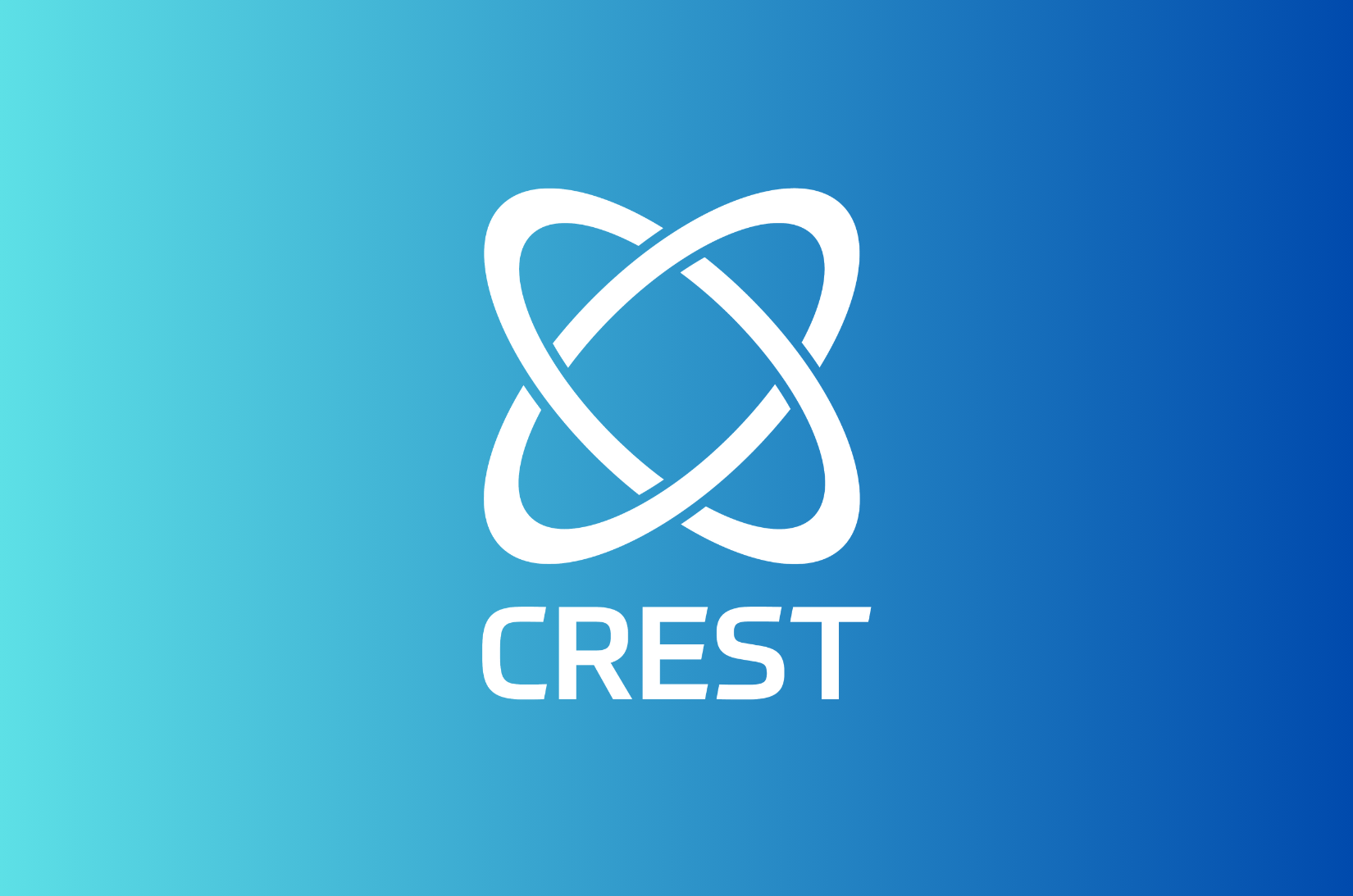
August 15, 2024
What is Penetration Testing? Penetration testing, often referred to as pen testing, is a controlled, ethical hacking process designed to evaluate the security of systems, networks, and applications. It simulates potential cyberattacks to identify vulnerabilities before malicious actors can exploit them. The scope and objectives of a pen test vary depending on an organisation's needs, ranging from simple vulnerability assessments to complex red-teaming exercises. However, not all penetration testing services are created equal. The effectiveness of a pen test largely depends on the expertise and methodology of the provider. This is where CREST accreditation comes into play. What is CREST? CREST, which stands for the Council for Registered Ethical Security Testers, is an international non-profit accreditation body that sets high standards for cybersecurity service providers. CREST certification is recognised globally and is awarded to organisations and individuals who meet stringent criteria in technical competence, ethical conduct, and operational integrity. CREST’s rigorous certification process ensures that only the most capable and trustworthy organisations receive its accreditation. Companies must regularly undergo assessments to maintain their CREST status, ensuring they stay current with the latest developments in cybersecurity. Why Choose a CREST-Certified Pen Testing Provider? Choosing a CREST-certified provider offers several significant advantages: 1. Assurance of Expertise: CREST-certified organisations employ highly trained and experienced professionals. To become CREST-registered, penetration testers must pass rigorous exams and demonstrate substantial experience in the field, often accumulating thousands of hours of hands-on testing. 2. Compliance with Regulations: Many industries are subject to strict regulations regarding data security, such as GDPR, ISO 27001, and PCI DSS. A CREST-certified pen test helps organisations meet these regulatory requirements, providing assurance that their security measures are both robust and compliant. 3. Global Recognition: CREST accreditation is recognised worldwide, making it a valuable asset for organisations operating internationally. This global recognition ensures that your pen testing provider adheres to the highest standards, regardless of where your business operates. 4. Ongoing Professional Development: CREST-certified organisations are committed to continuous improvement. They stay updated on the latest cybersecurity threats and techniques, ensuring their services remain at the cutting edge of the industry. 5. Trusted Methodologies: The CREST penetration testing process follows established best practices, covering all aspects of the engagement from scoping and reconnaissance to reporting and data protection. This ensures a thorough and reliable assessment of your security posture. How Does CREST Certification Work? To achieve CREST certification, companies undergo a detailed assessment of their business processes, data security measures, and testing methodologies. This evaluation is not a one-time event but an ongoing commitment. CREST members must submit to annual reviews and complete a full reassessment every three years to maintain their certification. Additionally, CREST-certified companies must adhere to a strict code of conduct, which includes procedures for addressing any complaints or issues that may arise during an engagement. This commitment to ethical practices is a cornerstone of CREST accreditation, ensuring that certified providers act with integrity in all their interactions. Benefits of Using CREST-Accredited Services Opting for CREST-accredited penetration testing services offers peace of mind and tangible benefits: Expert-Driven Assessments: Your testing will be conducted by professionals who have proven their skills through CREST’s rigorous certification process. Enhanced Security Confidence: With CREST accreditation, you can trust that your pen testing provider adheres to the highest standards, reducing the risk of security breaches. Regulatory Compliance: CREST-certified tests can help demonstrate compliance with various regulatory frameworks, which is crucial for avoiding fines and maintaining customer trust. Competitive Advantage: Engaging a CREST-accredited provider can give you a competitive edge, particularly when bidding for contracts or working with clients who prioritise security. Why Safetech Innovations Recommends CREST-Certified Testing At Safetech Innovations, we understand the importance of rigorous security assessments in protecting your organisation from cyber threats. That’s why we recommend choosing a CREST-certified penetration testing provider. Their commitment to excellence and adherence to best practices ensures that your systems are thoroughly evaluated and vulnerabilities are effectively addressed. By opting for CREST-certified services, you are investing in the highest level of security assurance available, safeguarding your business against the ever-evolving threat landscape. In summary, CREST accreditation is a mark of quality in the cybersecurity industry, offering assurance that your penetration testing provider meets the highest standards of expertise, ethics, and professionalism. Whether you want to comply with regulatory requirements, enhance your security posture, or gain a competitive edge, CREST-certified pen testing services provide the comprehensive solutions you need. Safeguard your future with CREST-certified penetration testing—choose a provider that meets the gold standard in cybersecurity. Get in touch with us today .

August 14, 2024
While conventional antivirus (AV) solutions play a crucial role in identifying and blocking known threats, they may fall short when it comes to defending against advanced, zero-day attacks, ransomware, and complex phishing schemes. To ensure robust security, overlaying your existing antivirus with advanced protection is vital. This enhanced layer adds real-time threat detection, behavioural analysis, and machine learning capabilities that can identify and neutralise threats before they cause damage. Cybercriminals are constantly innovating, and your business cannot afford to rely on outdated defences. A multi-layered approach significantly increases your resilience against breaches, safeguarding sensitive data, protecting your business reputation, and ensuring compliance with industry regulations.

July 8, 2024
Why is email security so important in 2024? Email is one of the most popular attack vectors for cyber criminals, and this includes the use of sophisticated phishing attacks, malware, and spam, which has made securing email communications more important than ever. One key point to consider is how email exploitation impacts us financially. In 2023, phishing attacks accounted for 36% of all data breaches, a trend expected to continue into 2024. Ransomware attacks have also increased, with a business falling victim every 11 seconds. The financial repercussions of these breaches are substantial; the average data breach cost in 2023 was $4.35 million, while the average ransom payment was $1.85 million. The volume of Email Communication This number is projected to grow to 376 billion by 2025, highlighting the extensive reliance on email for formal correspondence in the business world. This means that this particular attack vector will continue to remain a popular choice with global cyber criminals. Regulatory Compliance Compliance with regulations such as the General Data Protection Regulation (GDPR) and the NIS2 Directive will continue to hold to account any businesses that do not adhere to their rigorous compliance requirements. Non-compliance can lead to fines of up to 4% of annual global turnover, making robust email security measures essential for businesses to avoid severe financial penalties. Human Error and Advanced Threats Human error is a leading cause of security breaches, with over 90% of cyber incidents traceable to some form of human error, often involving email. Cyber criminals also use advanced techniques like AI and machine learning to craft highly targeted and convincing phishing emails, increasing the difficulty of detecting these threats. What should I look out for? Email exploitation by cyber criminals can take various forms, with phishing, spear phishing, and email spoofing being some of the most prevalent techniques. Here are some clear examples of each: Phishing Example: 1. Subject: Your Account Has Been Suspended 2. Body:
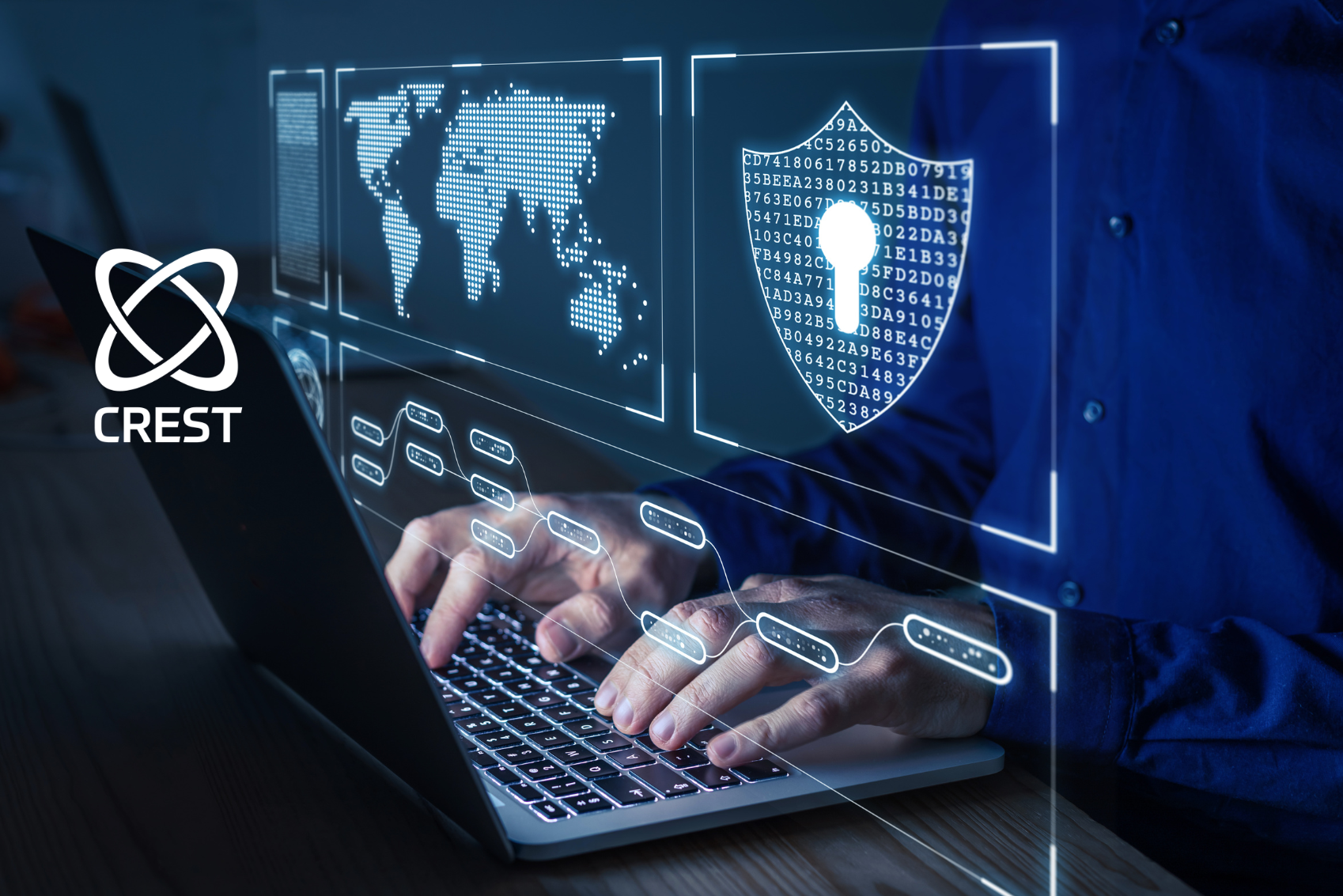
June 26, 2024
Understanding CREST Accredited Cyber Security What is CREST Accreditation? CREST, or the Council of Registered Ethical Security Testers, is a not-for-profit accreditation and certification body that represents and supports the technical information security market. CREST accreditation is awarded to organisations and individuals who meet rigorous standards of quality, proficiency, and integrity in cybersecurity. This accreditation ensures that certified entities adhere to the highest ethical and professional standards, providing clients with the assurance of top-tier security expertise and practices. The Importance of CREST Accreditation CREST-accredited cyber security services are recognised globally for their excellence. The accreditation process involves comprehensive assessments and regular audits to ensure continuous compliance with stringent security standards. This guarantees that CREST-certified providers are equipped with the latest knowledge, skills, and tools to tackle emerging cyber threats effectively. Traditional Security: An Overview What Constitutes Traditional Security? Traditional security encompasses conventional methods and practices used to protect information and IT infrastructure from cyber threats. This includes firewalls, antivirus software, intrusion detection systems (IDS), and other legacy security measures that have been in use for many years. Limitations of Traditional Security While traditional security measures have been effective in the past, they are increasingly inadequate in the face of modern cyber threats. The primary limitations include: 1. Reactive Nature: Traditional security often reacts to threats after they occur, rather than preventing them proactively. 2. Limited Scope: These methods typically focus on known threats, leaving organisations vulnerable to new and sophisticated attacks. 3. Resource Intensive: Maintaining and updating traditional security infrastructure can be costly and time-consuming. 4. Lack of Comprehensive Coverage: Traditional security solutions may not provide holistic protection, leaving gaps that can be exploited by attackers. CREST-Accredited Cyber Security vs. Traditional Security: Key Differences 1 . Proactive vs. Reactive Approach Traditional Security: • Reactive: Traditional security measures often respond to threats after they have already breached the system. • Limited Detection: Many traditional tools rely on signature-based detection, which only identifies known threats. CREST Accredited Cyber Security: • Proactive: CREST-accredited providers employ advanced threat intelligence and proactive threat hunting to identify and mitigate threats before they cause harm. • Behavioural Analysis: Using cutting-edge technologies like machine learning and artificial intelligence, CREST-accredited services can detect anomalies and potential threats in real-time. 2. Depth of Expertise and Knowledge Traditional Security: • Generalised Skills: Traditional security teams may possess broad knowledge but often lack specialized expertise. • Static Learning: Continuous professional development may not be prioritised, leading to outdated skills and knowledge. CREST-Accredited Cyber Security: • Specialised Expertise: CREST-accredited professionals undergo rigorous training and certification, ensuring a deep understanding of the latest threats and mitigation strategies. • Continuous Learning: CREST mandates ongoing education and training, ensuring that professionals stay updated with the latest cybersecurity advancements. 3. Comprehensive Security Solutions Traditional Security: • Siloed Solutions: Traditional security often involves disparate tools and systems that may not integrate well. • Incomplete Coverage: These solutions might focus on specific areas, such as network security, while neglecting others, like endpoint security or cloud security. CREST-Accredited Cyber Security: • Integrated Approach: CREST-accredited services provide holistic solutions that cover all aspects of cybersecurity, from network and endpoint security to cloud and application security. • Seamless Integration: These solutions are designed to work together seamlessly, providing comprehensive protection across the entire IT environment. 4. Regulatory Compliance and Standards Traditional Security: • Variable Compliance: Adherence to industry standards and regulations can vary significantly among traditional security providers. • Inconsistent Audits: Regular audits and compliance checks may not be rigorously enforced. CREST-Accredited Cyber Security: • Guaranteed Compliance: CREST-accredited providers adhere to the highest industry standards and regulations, ensuring full compliance. • Regular Audits: CREST conducts regular audits and assessments to maintain accreditation, ensuring continuous adherence to best practices. 5. Incident Response and Management Traditional Security: • Slow Response: Traditional security teams may not have dedicated incident response capabilities, leading to slower reaction times. • Ad-Hoc Management: Incident management procedures may be inconsistent and lack coordination. CREST Accredited Cyber Security: • Rapid Response: CREST-accredited providers have dedicated incident response teams that can quickly and effectively manage security incidents. • Structured Processes: Incident response is structured and coordinated, minimising the impact of security breaches and ensuring swift recovery. Case Studies: CREST-Accredited Cyber Security in Action (Hypothetical) Case Study 1: Manufacturing Sector A mid-sized manufacturing company was facing persistent cyber threats, including intellectual property theft and industrial espionage. Their traditional security measures were not equipped to handle the sophisticated attacks targeting their proprietary designs and operational technologies. After partnering with Safetech Innovations for CREST-accredited cyber security services, the manufacturing company experienced a significant decline in successful cyber intrusions. Our proactive threat hunting and advanced threat intelligence identified and mitigated threats before they could compromise sensitive data. Additionally, our tailored security solutions ensured the protection of critical industrial systems, enhancing the overall security posture of the company. Case Study 2: Education Sector A prominent educational institution was struggling with frequent cyberattacks, including phishing schemes and unauthorised access to student records. Traditional security solutions were unable to provide adequate protection against these persistent threats. By implementing our CREST-accredited cyber security services, the institution achieved enhanced protection through continuous monitoring and real-time threat detection. Our incident response team swiftly addressed security incidents, preventing data breaches and safeguarding student information. Furthermore, our comprehensive security solutions ensured compliance with education-specific regulations, maintaining the integrity and confidentiality of academic records. Case Study 3: Legal Sector A well-established law firm was dealing with increasing cyber threats, such as ransomware attacks and data breaches, which jeopardized sensitive client information and legal documents. Traditional security measures failed to provide sufficient protection against these advanced threats. Safetech Innovations stepped in with our CREST-accredited cyber security services, offering advanced threat detection and response capabilities. Our integrated security solutions cover all aspects of the firm's IT environment, from network security to endpoint protection. As a result, the law firm experienced a significant reduction in cyber incidents, ensuring the confidentiality of client data and maintaining its professional reputation. The Safetech Innovations Approach At Safetech Innovations Global Services, we pride ourselves on being a CREST-accredited cyber security provider. Our approach is designed to deliver the highest level of protection and peace of mind to our clients. Here’s how we differentiate ourselves from traditional security solutions: 1. Advanced Threat Intelligence We leverage advanced threat intelligence platforms to stay ahead of cyber adversaries. By continuously monitoring global threat landscapes and analysing threat data, we can predict and prevent attacks before they occur. This proactive approach sets us apart from traditional, reactive security measures. 2. Cutting-Edge Technology Our CREST-accredited cyber security services utilise state-of-the-art technologies, including artificial intelligence and machine learning, to detect and respond to threats in real time. These technologies enable us to identify patterns and anomalies that traditional security tools might miss, providing superior protection. 3. Continuous Improvement We are committed to continuous improvement and professional development. Our team undergoes regular training and certification to stay updated with the latest cybersecurity trends and techniques. This ensures that our clients benefit from the most current and effective security practices. 4. Holistic Security Solutions Our services encompass all aspects of cybersecurity, from risk assessment and vulnerability management to incident response and compliance support. By providing a comprehensive suite of services, we ensure that no aspect of your security is overlooked. 5. Transparent Reporting and Communication We believe in maintaining transparency with our clients. Our CREST-accredited services include detailed reporting and regular communication, keeping you informed about your security posture and any actions taken. This transparency builds trust and ensures that you are always aware of your organisation’s security status. Summary CREST-accredited cyber security offers a superior alternative, providing proactive, comprehensive, and expert protection against modern threats. At Safetech Innovations Global Services, we are proud to be a CREST-accredited provider, delivering top-tier cybersecurity solutions to safeguard your business. By choosing our CREST-accredited cyber security services, you benefit from advanced threat intelligence, cutting-edge technology, and a team of dedicated professionals committed to your security. Protect your organization against evolving cyber threats and ensure regulatory compliance with Safetech Innovations. Contact us today to learn more about how our CREST-accredited cybersecurity services can enhance your security posture and provide peace of mind. To learn more about our CREST-accredited Penetration Testing services, or to book your penetration test, click here .
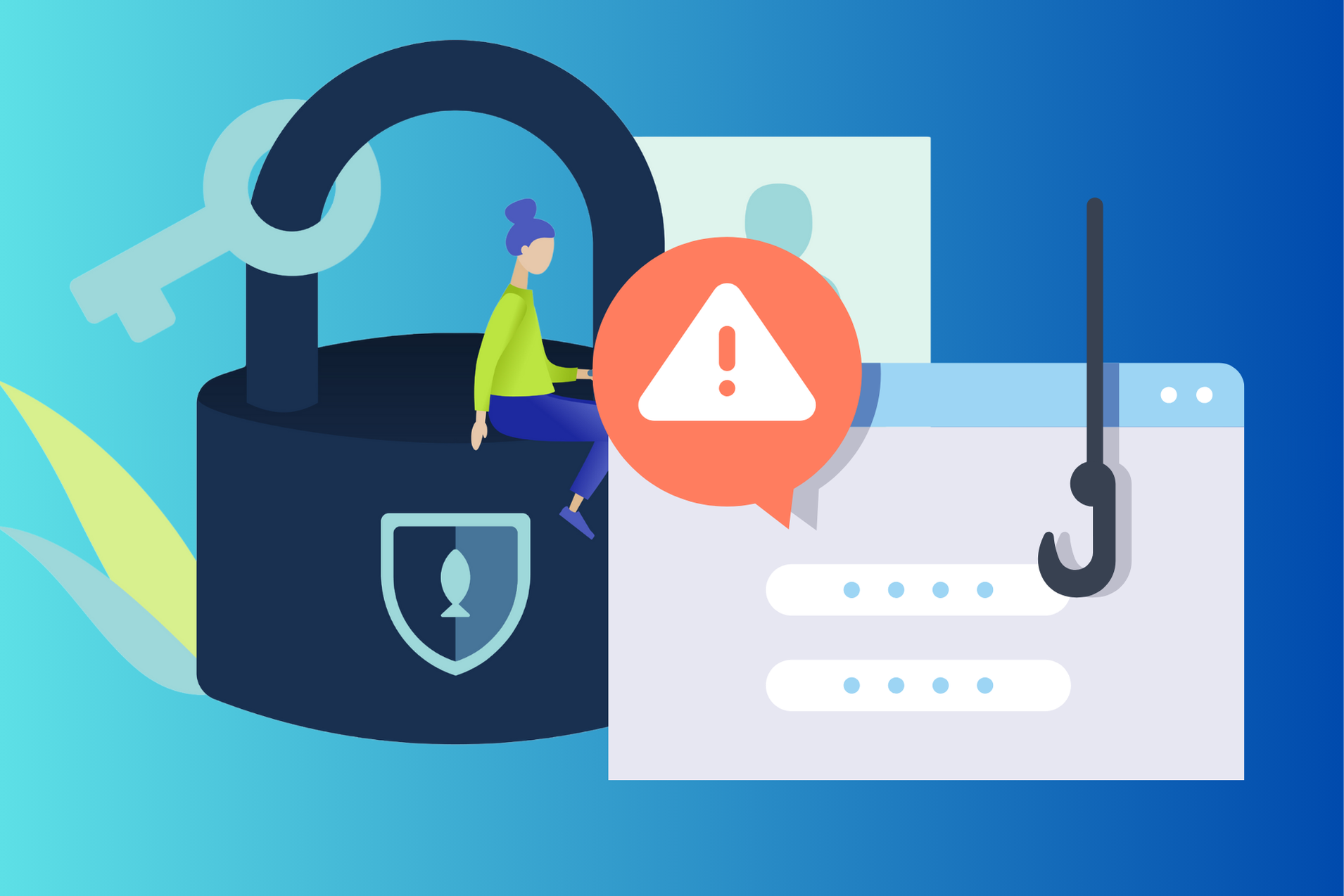
June 10, 2024
What do I need to do to better protect my employees from Phishing? Training and education is key. We have a mantra at Safetech, “Train, Don’t Blame”. This means that we advise customers to move away from blaming employees which has been used as a strategy for dealing with employees who have failed on phishing email simulations, and reverting to training, education and supporting their members of staff. This way, you will achieve greater success in reducing the number of breaches from phishing against your business. To better protect your employees from phishing, you need to implement comprehensive Phishing Training & Awareness programs. Regularly educate staff on recognising phishing attempts through interactive and up-to-date training sessions. Why is Phishing Training & Awareness Important Phishing remains a major cybersecurity threat in 2024, with significant statistics underscoring its impact. 1. Prevalence and Impact: Over 90% of breaches involve a phishing attack, exploiting human vulnerabilities more than ever before. Phishing is responsible for 71% of all cyber threats, indicating its dominant role in cybersecurity incidents. 2. Growth of Phishing Attacks: There was a nearly 60% increase in phishing attacks globally in 2023 compared to 2022. In 2023, 94% of organisations reported falling prey to phishing attacks, with 96% of them experiencing negative impacts as a result. 3. Methods and Trends: Spear phishing attachments were used in 62% of phishing attacks, while phishing links accounted for 33%. Social engineering and the use of AI-driven tools to create more realistic phishing emails and deepfake voice recordings are increasingly being utilised by cybercriminals. 4. Industry-Specific Impact: The finance, technology, and entertainment sectors are among the most targeted by phishing attacks Business Email Compromise (BEC), often involving spear phishing, accounts for a significant portion of incidents, with 80% of affected organisations lacking multi-factor authentication at the time of the attack 5. User Behaviour and Training Effectiveness: Despite awareness efforts, only 18.3% of phishing simulation emails were properly reported by users, while nearly 9.3% were clicked on Alarmingly, 96% of employees admitted to engaging in risky behaviours despite knowing the potential consequences. These statistics highlight the critical need for comprehensive and continuous Phishing Training & Awareness programs . By educating employees on recognising and responding to phishing attempts and implementing robust security measures, organisations can better protect themselves against this pervasive threat. The Role of Content in Phishing Training & Awareness Programs -Why Does Content Matter? While the importance of phishing training and awareness is clear, the effectiveness of such programs hinges on the quality and relevance of the content provided. Here are key considerations for developing impactful training content: 1. Realistic and Relatable Scenarios Effective phishing training should include realistic scenarios that reflect the types of attacks employees might encounter in their daily work. This involves using examples that are relevant to the specific industry and organisation. For instance, a financial institution might focus on phishing attempts that mimic legitimate banking communications, while a healthcare organisation might highlight phishing emails related to patient records or medical services. 2. Interactive and Engaging Formats Traditional training methods, such as lengthy presentations or static documents, may not capture employees' attention effectively. Incorporating interactive elements, such as simulations, quizzes, and gamified exercises, can enhance engagement and retention. Simulated phishing exercises, where employees receive mock phishing emails and are assessed on their response, are particularly valuable in reinforcing learning through practical experience. 3. Clear and Actionable Guidance Training content should provide clear and actionable guidance on how to recognize and respond to phishing attempts. This includes outlining common red flags, such as suspicious email addresses, unexpected attachments, and urgent requests for personal information. Additionally, employees should be instructed on the appropriate steps to take if they suspect a phishing attempt, such as reporting the email to the IT department and refraining from clicking on any links or attachments. 4. Continuous and Adaptive Learning Cybersecurity threats are constantly evolving, and phishing tactics are becoming increasingly sophisticated. To keep pace with these changes, phishing training should not be a one-time event but rather an ongoing process. Regular updates to the training content, based on emerging threats and lessons learned from past incidents, are essential. Additionally, organisations should consider implementing adaptive learning approaches that tailor the training experience to the needs and knowledge levels of individual employees. 5. Metrics and Feedback Mechanisms Measuring the effectiveness of phishing training programs is crucial for continuous improvement. Organisations should establish metrics to assess the impact of training on employee behaviour, such as the rate of phishing email reporting and the number of successful phishing attempts. Collecting feedback from employees on the training content and delivery methods can also provide valuable insights for refining and enhancing the program. Content Matters, What Are The Key Elements of Effective Phishing Training Content? Real-world scenarios. Using real-world examples and case studies helps employees understand the practical implications of phishing attacks and how they can occur in their daily work environment. Interactive modules. Interactive elements such as quizzes, simulations, and hands-on activities make the training more engaging and reinforce learning. Regular updates are important when considering the use of a phishing training and awareness platform. Phishing tactics evolve rapidly, this is why the platform you use needs to regularly update the training content to ensure that employees are aware of the latest threats and how to combat them. This also helps aid development. Role-Specific Training: Different roles within an organisation may face different types of phishing threats. Tailoring the training content to specific roles ensures that all employees receive relevant and applicable information. Examples of Phishing Training and Awareness Success Case Study 1: Global Financial Institution A global financial institution implemented a comprehensive phishing training program that included regular simulations and role-specific training. Over a year, they observed a 70% reduction in successful phishing attacks and a 50% increase in the reporting of phishing attempts by employees. Case Study 2: Healthcare Provider A healthcare provider facing strict regulatory requirements introduced an engaging and interactive phishing awareness campaign. The program included monthly newsletters, quizzes, and simulated phishing attacks. Within six months, they achieved full compliance with regulatory standards and significantly reduced their phishing-related incidents. Case Study 3: Technology Company A technology company utilised gamified training modules to educate their employees about phishing. The interactive and competitive nature of the training resulted in higher engagement and retention rates. As a result, the company saw a dramatic decrease in the number of successful phishing attacks and an increase in employee awareness and vigilance. Summary If your organisation invests in comprehensive phishing training programs not only protect themselves from financial and reputational damage but also foster a culture of security. Continuous improvement and adaptation to the evolving threat landscape are crucial for maintaining the effectiveness of these programs. By prioritising Phishing Training & Awareness, organisations can build a robust defence against one of the most common and damaging cyber threats. In an era where cyber threats are constantly evolving, the importance of Phishing Training & Awareness cannot be overstated. It is an investment that pays off in the form of reduced risk, enhanced security posture, and peace of mind for both employees and stakeholders. If you are looking for a phishing training and awareness platform that trains, educates and motivates your employees, whilst better protecting your business from exploitation, get in touch with us today .
More protection. Less tech.
We're removing the complexity within your security tech stack. Forget alert fatigue and let Safetech streamline and simplify your security posture.
NAVIGATION
STAY CONNECTED
You need a helping hand with your project?
Thank you for signing up to our email newsletter.
Oops, there was an error sending your message.
Please try again later
Please try again later


No. 12-14 Frunzei Street, Frunzei Center, 1st-3rd Floor, 2nd District, 021533, Bucharest, Romania

Safetech Innovations Global Services LTD. All rights reserved. - We are a UK company. Registration number: 13901115. In the USA we act under Safetech Innovations USA Inc, a Virginia corporation registered under 11506098. ICO (UK) ZB425433
© 2025
Professional Indemnity Insurance | Public and Product Liability Insurance *Information can be provided on request



